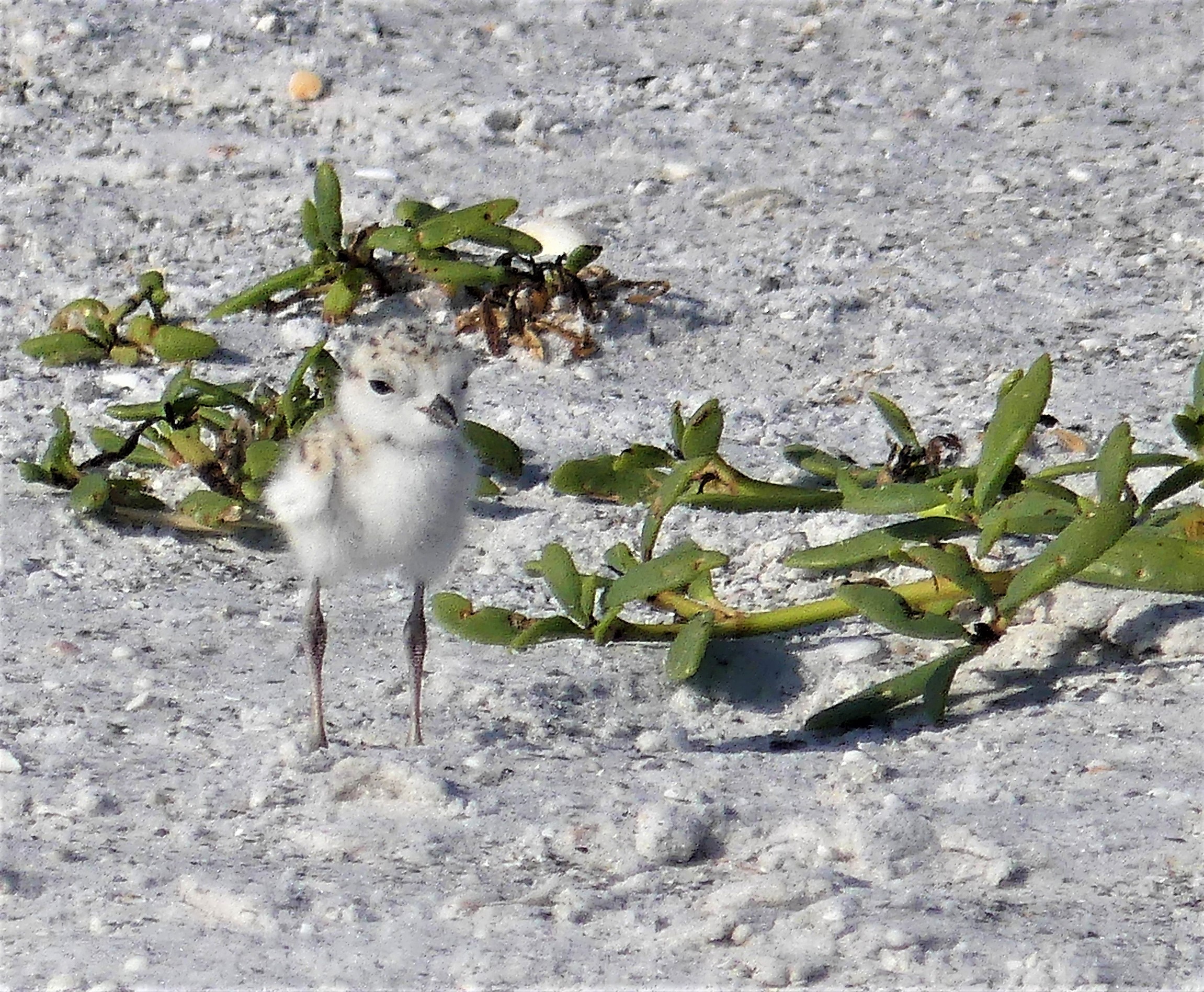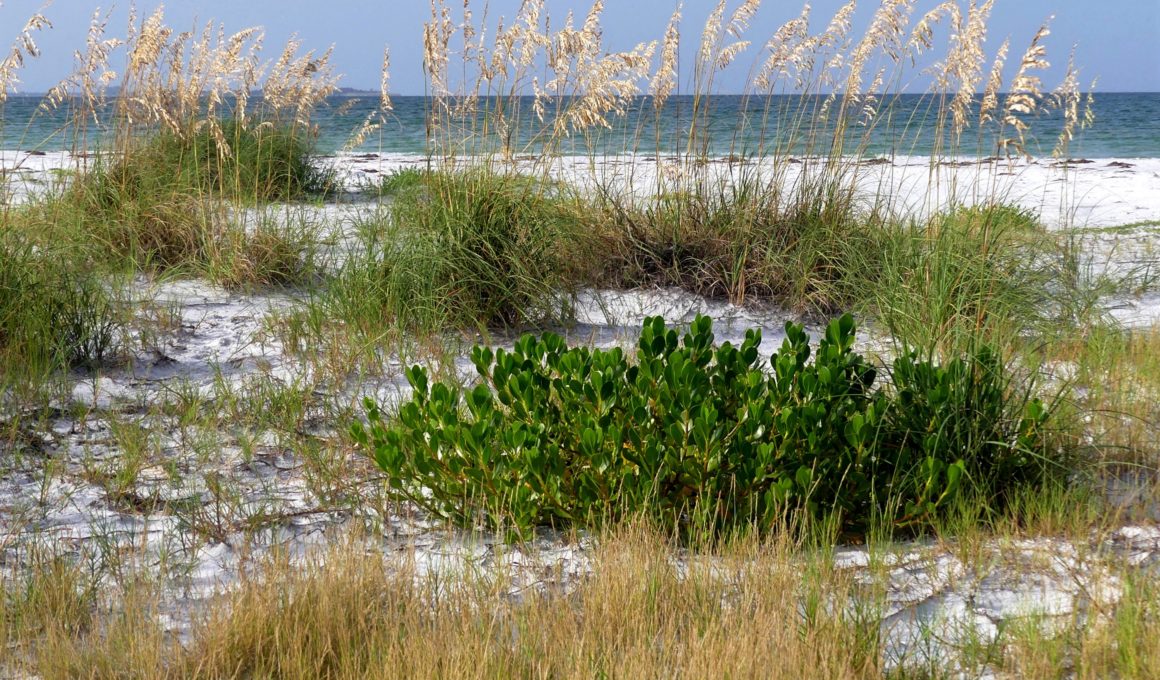
Lorraine Margeson will tell you that she is a “bird person” and not a “plant person.” But while she has been zealously guarding nesting shorebirds at Outback Key, leading a team of volunteers and law enforcement officers to protect “her birds,” she has also been watching the plants, observing habitat succession in action.
Article by Jan Allyn and Lorraine Margeson, photos by Lorraine Margeson
Barrier islands are constantly reshaped by wind and waves, and Outback Key formed gradually over the years as sand accumulated just off the North Beach recreation area in Fort De Soto County Park. At first a barren sand dune, it has been steadily acquiring a diverse collection of coastal dune plants.
In her book “How to Read a Florida Gulf Coast Beach,” Tonya Clayton describes the process by which coastal plants help embryo dunes collect sand and become mature dunes: “Specially equipped grasses typically handle the job of growing up big dunes from little ones. The best developers are salt-tolerant, multiyear plants that grow not only sideways into new territory but also upward vigorously enough to keep from being buried by the sands they accumulate. . . .
“A dense thicket of roots to help bind and anchor the sand – in addition to a tolerance for extreme dryness and occasional root exposure – is essential.”

As long as enough bare sandy places remain to satisfy the nesting requirements of the beach-nesting shorebird species that Margeson shepherds – least terns, snowy plovers and Wilson’s plovers – the more plants, the better. Their roots hold the sand in place and protect the island from washing away. The elevation of the key has increased slightly as they continue to catch and hold sand, making overwashes during storms and king tides less likely. Plants provide cover for the birds and other wildlife to hide from predators and to escape from the scorching sun. Their leaves, berries and seeds provide food, too.
“All five of the most protected shorebird nesting species the state have successfully bred on Outback Key at least one year since 2015,” Margeson said. “That includes the American oystercatcher, black skimmer, least tern, snowy plover and Wilson’s plover. All but the Wilson’s plover have been banded to document their presence and track their movements as they grow older.”

Outback Key’s wintering populations of the federally endangered red knot and piping plover are among the highest in the state along with a high percentage of the state-protected snowy and Wilson’s plover. In addition, volunteers from Sea Turtle Trackers report the first-ever successful hatching of loggerhead sea turtles at Outback Key in the 2021 season with 280 babies swimming off into Tampa Bay.
Along with the fauna, the flora on Outback Key are thriving with something to see in every season. In spring, the saltgrass blooms covering the island in a sea of purple. In summer, seaside gentian puts on its own purple show and searocket sports little white flowers. Seaside goldenrod shines in the fall. Nearly year-round you can see railroad vine blooming.
Only a few invasive plants have found their way to Outback Key so far. Margeson watches for them and finds volunteers to yank them out. Australian pine, beach naupaka and Durban crowsfoot grass have found their way there, but their days are numbered. “As of Oct. 25, all invasives have been removed from Outback Key,” she said.
Jan Allyn is past president of the Pinellas Chapter of the Florida Native Plant Society and web content manager for the Water Insititute at the University of South Florida.
Lorraine Margeson is a long-time volunteer with the Florida Shorebird Alliance and is certified as a bird monitor by the U.S. Army Corps of Engineers and the FWC. Since 2014, she has worked on multiple construction projects across the state for the corps and county governments through various environmental firms. She has been recognized for her volunteer activities by the city of St. Petersburg, the Southwest Florida Water Management District and the Florida Native Plant Society.
